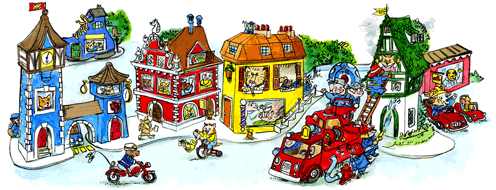As the
last weekly Robin discussed, when DC Comics introduced Tim Drake as a new Robin in late 1989, it was careful not to offend fans of the original by letting him appear to supplant Dick Grayson.
He was, unlike the first Jason Todd, not simply a younger version of Dick. More important, unlike the second Jason, he was passionately respectful of Dick’s legacy.
The character made the arguments that had been
appearing in the Batman letter columns about what Robin meant to
Batman, and why he needed a teen sidekick.
But those weren’t the only aspects of Tim Drake’s character that produced a hit. As
Marv Wolfman conceived of and scripted the story, there was a certain grouping of his personal qualities that readers might have found familiar.
- Tim knows all about Batman, Robin, and Nightwing. “I’ve followed them both....I know them so well.” “Mostly, I read about you two.”
- He collects stories about them (“Since I was able to read, I clipped every article I could”) and pictures (the first thing we see him doing is taking photographs of Batman).
- He knows their secret identities. He knows where they live. Indeed, his analysis of Batman’s psychology shows that he knows more about them than they do: “Batman needs a Robin. No matter what he thinks he wants.”
- He’s emotionally invested in the Dynamic Duo. “I care about them, Alfred. I really do.” “You’ve both been so important to me in so many ways.”
- They’re part of his imaginative life. “Heck, I used to fantasize what it would be like to be Robin.”
In subsequent stories, writers
Alan Grant and
Chuck Dixon added these details:
- Tim is a whiz at computers.
- He hangs out with his school’s nerds.
- He plays role-playing games.
Finally, even though Tim’s only thirteen, he insists that Batman and Robin should be the way they were
when he was twelve. “I want him to be the Batman I remember.” “I was only thinking of the team...of what Batman and Robin meant! You can’t let a legend die like that, Dick...”
In short, Tim Drake was the embodiment of a comic-book fanboy. Of course, the company’s writers never gave him the habit of reading comics (unlike his future young teammates Impulse and Kid Devil), avoiding the risk that readers might think they were being parodied. Fanboys were free to identify with Tim’s smarts and ideals.
Back in 1940, when
Detective Comics introduced Dick Grayson, comic books were published through newsstands for a mass audience. Dick was everything all boys might want to be—athletic
and smart
and funny. (So much so that he turned off some readers,
like Jules Feiffer, even as he
caught the attention of others.)
Nearly fifty years later, the comic-book market was defined by specialty shops. Readers were older, more dedicated, and more critical. And for those readers, the new Robin could reflect of the best parts of their youthful selves.
I started making notes for this posting in 2007, and in early 2011 Brian Cronin at
Comics Should Be Good made similar points. But the idea goes back a long time. Reviewers like
Tom Bondurant and
D. K. Latta saw similarities between Tim and fanfiction Mary Sues [well, Latta wrote “Mary Janes”], which are projections of a writer’s wishful self. That’s not really the same as a character designed for fans to identify with. Nonetheless, Tim definitely reflected the fans.













